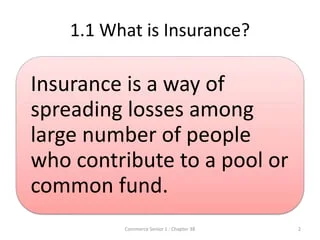Facts About Pacific Prime Uncovered

This decrease of virtually 2 million in the variety of people 'without insurance (a reduction of around 4 percent) is definitely a positive change. With a softer economy in 2000 the current reported gains in insurance policy coverage may not proceed (Fronstin, 2001) (global health insurance). The decline in the variety of without insurance will certainly not proceed if the economy continues to be sluggish and health and wellness care prices remain to exceed rising cost of living
This is due to the fact that the data were collected for a period of solid financial performance. Of the estimated 42 million individuals who were uninsured, just about about 420,000 (regarding 1 percent) were under 65 years old, the age at which most Americans come to be eligible for Medicare; 32 million were adults between ages 18 and 65, around 19 percent of all grownups in this age team; and 10 million were kids under 18 years of age, about 13.9 percent of all youngsters (Mills, 2000).
These quotes of the number of individuals without insurance are produced from the annual March Supplement to the Current Populace Study (CPS), carried out by the Census Bureau. Unless or else kept in mind, nationwide price quotes of individuals without health and wellness insurance and proportions of the populace with different sort of protection are based upon the CPS, one of the most extensively used source of price quotes of insurance protection and uninsurance rates.
How Pacific Prime can Save You Time, Stress, and Money.

Still, the CPS is specifically beneficial since it produces annual estimates reasonably swiftly, reporting the previous year's insurance protection approximates each September, and since it is the basis for a constant set of estimates for more than 20 years, enabling evaluation of patterns in insurance coverage over time. For these factors, along with the substantial use of the CPS in various other studies of insurance policy coverage that are presented in this record, we count on CPS estimates, with limitations noted.

The quote of the number of uninsured individuals increases when a population's insurance standing is tracked for numerous years. Over a three-year duration starting early in 1993, 72 million people, 29 percent of the U.S. https://visual.ly/users/pacificpr1me/portfolio. populace, were without insurance coverage for at the very least one month. Within a single year (1994 ), 53 million individuals experienced at the very least a month without protection (Bennefield, 1998a)
6 out of every ten uninsured grownups are themselves employed. Working does enhance the probability that one and one's family members will have insurance coverage, it is not a guarantee. Also members of households with 2 full-time breadwinner have almost a one-in-ten possibility of being without insurance (9.1 percent uninsured price) (Hoffman and Pohl, 2000).
Little Known Questions About Pacific Prime.
New immigrants make up a substantial proportion of individuals without medical insurance. One analysis has actually connected a considerable part of the current growth in click site the dimension of the U.S. uninsured population to immigrants that got here in the country between 1994 and 1998 (Camarota and Edwards, 2000). Current immigrants (those that pertained to the United States within the previous 4 years) do have a high rate of being without insurance (46 percent), yet they and their youngsters make up just 6 percent of those without insurance coverage country wide (Holahan et al., 2001).
The relationship between health insurance policy and access to care is well developed, as recorded later in this phase. Although the relationship between medical insurance and health and wellness end results is neither straight neither straightforward, a substantial professional and health services research literary works links health insurance policy protection to enhanced accessibility to care, far better quality, and enhanced personal and populace health and wellness standing.
Degrees of evaluation for checking out the effects of uninsurance. This discussion of medical insurance protection focuses mainly on the U.S. populace under age 65 due to the fact that essentially all Americans 65 and older have Medicare or various other public protection. Moreover, it focuses specifically on those with no health and wellness insurance policy for any size of time.
The Facts About Pacific Prime Uncovered
The problems dealt with by the underinsured are in some areas comparable to those faced by the uninsured, although they are usually much less serious. Health insurance coverage, however, is neither necessary neither enough to acquire accessibility to clinical services. The independent and direct effect of health and wellness insurance policy protection on access to health solutions is well developed.
Others will acquire the health treatment they need even without medical insurance, by spending for it out of pocket or seeking it from service providers that offer treatment complimentary or at extremely subsidized rates. For still others, wellness insurance policy alone does not make sure invoice of treatment as a result of various other nonfinancial obstacles, such as a lack of healthcare suppliers in their area, minimal access to transport, illiteracy, or etymological and cultural distinctions.
Pacific Prime - Truths
Formal study regarding uninsured populaces in the USA dates to the late 1920s and early 1930s when the Board on the Price of Treatment generated a collection of records about financing doctor office sees and hospital stays. This problem came to be salient as the varieties of medically indigent climbed up during the Great Anxiety.
Comments on “What Does Pacific Prime Do?”